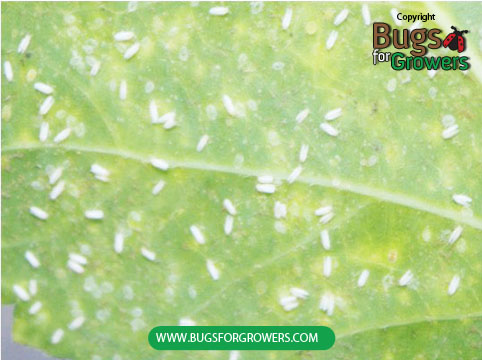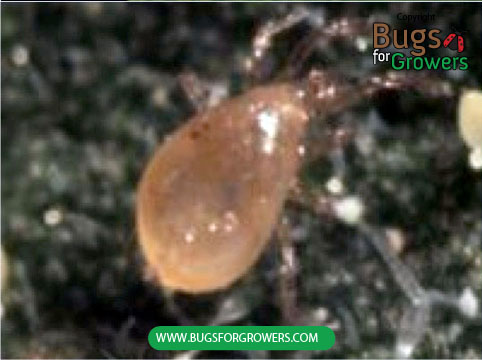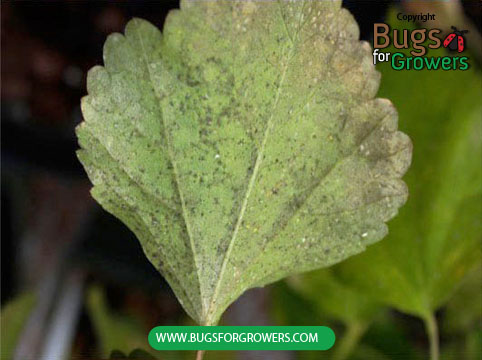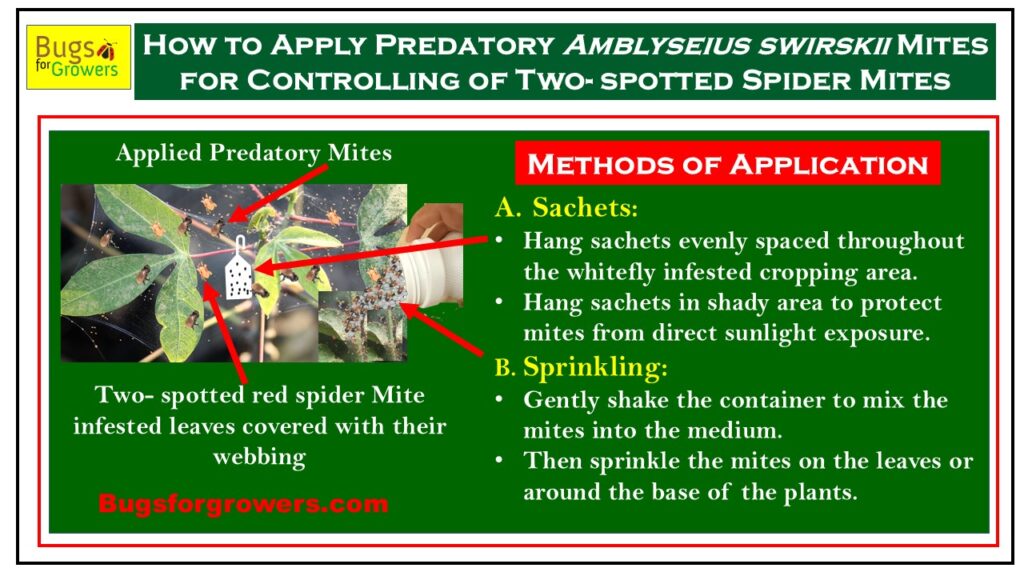When it comes to protecting your greenhouse or garden from damaging pests, two of the most common culprits are the two-spotted spider mite (Tetranychus urticae) (Photo 1) and the greenhouse whitefly (Trialeurodes vaporariorum) (Photo 2). Despite their small size, these pests can cause significant harm to many plant species, reducing plant vigor and crop yields. Fortunately, there’s a natural, sustainable solution: biological control using the predatory mite Amblyseius swirskii (Photo 3).
Photo 1. Two- spotted Spider Mite, Tetranychus urticae.
Photo 2. Greenhouse Whiteflies, Trialeurodes vaporariorum
Photo 3. Predatory spider mite, Amblyseius swirskii
The Problem: Spider Mites and Whiteflies
Two- spotted Spider Mites:
Two-spotted spider mites are easily recognized by the two dark spots on their backs and their eight-legged, reddish or yellowish bodies. They feed by piercing leaf tissues and sucking out sap, leading to stippling, yellowing, browning, and eventual leaf wilting. To make matters worse, they spin fine webs across leaves and stems (Photo 4.), reducing the plant’s aesthetic value and interfering with photosynthesis.
Photo 4. Fine webbing by two- spotted spider mites across leaves and stems.
Greenhouse whiteflies:
Greenhouse whiteflies, on the other hand, are small white-winged insects with six legs. Like spider mites, they feed on plant sap, causing yellowing, curling, and leaf drying. Honeydew secreted by whiteflies promotes the growth of black sooty mold (Photo 6), which blocks sunlight and hampers photosynthesis. This can stunt plant growth and even lead to plant death.
Photo 6. Honeydew secreted by whiteflies promoted the growth of black sooty mold on a leaf.
The Eco-Friendly Solution: Amblyseius swirskii
Rather than turning to chemical pesticides, which can harm beneficial insects, pollinators, and even contribute to pest resistance, many growers are now adopting biological control methods. Enter Amblyseius swirskii, a tiny predatory mite that naturally feeds on spider mites, whiteflies, and their eggs and larvae. These mites are especially effective in warm, humid environments, making them perfect for greenhouse conditions. Plus, they’re safe for humans and non-target pollinators like bumblebees and honeybees, making them an ideal option for eco-conscious gardeners.
How to Use Amblyseius swirskii Effectively
Introducing Amblyseius swirskii into your garden or greenhouse is straightforward, but proper application and monitoring are essential for success.
Application Methods:
- Slow-release sachets: Hang sachets directly on infested plants, but keep them out of direct sunlight to prevent overheating.
- Bulk sprinkling: Distribute a bran or vermiculite mixture containing the mites directly onto infested leaves and stems.
Recommended Rates:
- Preventive use: 2 mites per square foot in greenhouses.
- Curative use: 4–5 mites per square foot when pests are already present.
- Field applications: Apply 5,000 mites per acre every two weeks for ongoing control.
Final Thoughts
Using Amblyseius swirskii as a biological control agent offers an effective, non-toxic alternative to pesticides for managing spider mites and whiteflies. By introducing these natural predators, you can protect your plants, preserve beneficial insect populations, and maintain a healthy, sustainable growing environment. Ready to ditch the chemicals and embrace a greener solution? Amblyseius swirskii might just be the tiny hero your garden needs.







